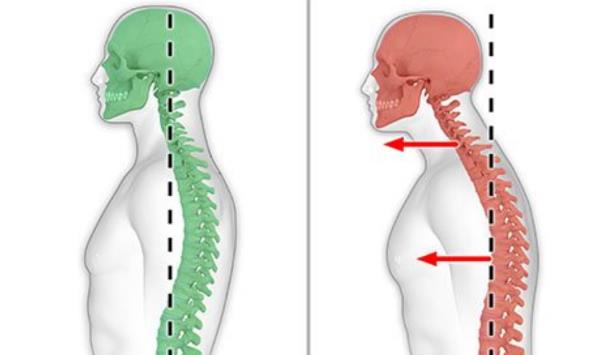How Bad Posture Can Cause Chronic Back Pain – and How to Correct It

Is Your Posture Secretly Ruining Your Back
Do you ever find yourself slumping at your desk or bending forward over your phone? We all do. But what feels like an innocent habit could actually be the culprit behind that persistent back pain that refuses to budge. Poor posture isn’t just getting you tired looking—it’s causing unnecessary stress to your spine and leading to chronic discomfort. The good news? You can fix it! Let’s talk about why posture plays a role in your back and how you can ease the ache.
How Bad Posture Leads to Chronic Back Pain
Your spine is built to maintain your body in balance and alignment. But when you slouch or sit incorrectly, it throws off this natural balance, causing all sorts of problems:
Increased Stress on Your Spine
Standing, sitting, or walking with the shoulders hanging forward and the head bent slightly transfers your body weight, speeding up the worsening of your spinal discs, which can lead to chronic pain and conditions such as herniated discs or sciatica.
Overused, Tight Muscles
Some muscles get used too much and become too tight, while other muscles atrophy from not being used enough, resulting in stiffness and pain.
Decreased Blood Flow
Remaining in a wrong posture for prolonged periods constricts blood flow, leading to tension and ache.
Pinched Nerves
A crooked spine compresses nerves, creating pain that extends down your back and even down into your legs, a symptom of such conditions as nerve impingement.
If left unchecked, occasional backaches can become chronic pain, compromising your mobility and lifestyle.

Small Solutions to Enhance Your Posture and Help Back Pain
The most effective method of preventing and relieving posture pain is through making small yet impactful changes in your lifestyle:
Sit Tall, Stand Tall
Keep your back straight and relaxed shoulders, seated or standing. Visualize having a string gently pulling you upwards from the very top of your head.
Tune Your Workspace
Have your computer monitor at eye level, your feet on the floor and flat, and your lower back supported by a good ergonomic chair.
Move More, Sit Less
Long periods of sitting cause muscles to tighten and your back to strain. Stand up, stretch, and walk each 30-45 minutes to keep your spine loose.
Strengthen & Stretch
Activities such as yoga, core strengthening, and back stretches can improve posture and lessen pain.
Sleep Smart
A good mattress and the proper pillow support spinal alignment during sleep.
When to See a Doctor
When your pain persists even after correct posture, there might be the need to seek professional help. Visit a doctor if you are experiencing.
- Consistent or progressive pain despite changes in posture
- Numbness or tingling in your legs, arms, or back
- Stiffness or restricted movements that interfere with your daily function
- Swollen, red, or inflamed back
Underlying spinal disorders may be hinted at by such symptoms, making it necessary to seek professional care.
Need Professional Help? Dr. Rahul Khanna Can Assist!
Living with chronic back pain? Dr. Rahul Khanna, a specialist in orthopedic treatment, is experienced in diagnosing and treating back, knee, and shoulder pain. He can check your posture, offer customized treatment plans, and assist you in leading a pain-free life.
Don’t let bad posture control your well-being! Schedule an appointment with Dr. Rahul Khanna today at www.drrahulkhanna.com
Emergency?
24 Hour Ready
Call Us for Emergency
+91-9828501360
Book an Appointment
Seamless Fitness Care Access: Booking an Appointment with Your
Trusted Doctor
FAQ's
Yes, if not treated. Poor posture for an extended period of time can cause chronic pain and even spinal problems, but catching it early can avoid long-term damage.
In a few weeks, you can notice the difference with regular practice. The trick is developing good habits!
A chiropractor can adjust your spine, but posture exercises and daily routines matter equally as well.
Yes! Sleeping on your side or back with a supportive pillow keeps your spine in neutral.
Yes, but the secret is balance—alternating between sitting and standing throughout the day is best.